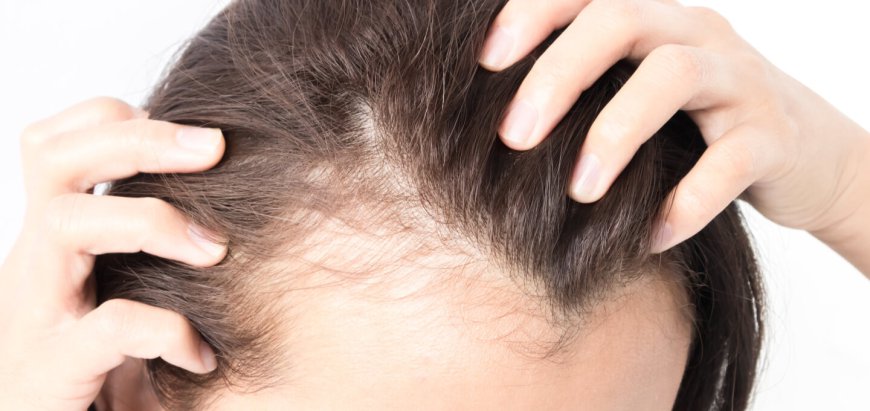Hair Loss Treatment: Expert Advice for Best Results
Are you searching for a Hair Loss Treatment in Dubai? There are many treatments to treat your hair loss and baldness. It produces long-lasting results.

Hair loss can be a distressing experience, impacting self-esteem and confidence. Many individuals seek effective treatments to combat this issue, whether it’s due to genetic factors, hormonal changes, stress, or medical conditions. Understanding the various treatment options available and knowing which ones may work best for you is crucial in achieving the best results. In this article, we’ll explore the most common and effective hair loss treatments, along with expert advice to guide you on your journey to thicker, healthier hair.
Understanding Hair Loss
Before diving into Hair Loss Treatment In Dubai, it's important to understand the different types of hair loss. The most common form is androgenetic alopecia, also known as male or female pattern baldness. This type of hair loss is hereditary and typically follows a distinct pattern. Other forms of hair loss include alopecia areata, which causes patchy bald spots, and telogen effluvium, a temporary condition often triggered by stress or hormonal changes.
Regardless of the type, the first step in managing hair loss is identifying the underlying cause. This can help you and your healthcare provider determine the most suitable treatment options. A thorough consultation with a dermatologist or trichologist can provide insights into the specific reasons behind your hair loss and lead to a tailored treatment plan.
Hair Loss Treatment Options
When it comes to hair loss treatment, there is no one-size-fits-all solution. The effectiveness of treatments can vary based on the individual’s unique circumstances. Here are some of the most popular options available today:
1. Minoxidil
Minoxidil, commonly known as Rogaine, is a topical solution that has been FDA-approved for treating hair loss. It is applied directly to the scalp and works by stimulating hair follicles and promoting blood circulation in the scalp. Studies have shown that minoxidil can lead to significant hair regrowth in both men and women, especially when used in the early stages of hair loss.
2. Finasteride
Finasteride, or Propecia, is an oral medication primarily prescribed for men experiencing hair loss. It works by inhibiting the production of dihydrotestosterone (DHT), a hormone that contributes to hair thinning and loss. By lowering DHT levels, finasteride can help slow hair loss and even promote regrowth in some individuals. However, it is important to discuss potential side effects with your healthcare provider before starting this treatment.
3. Low-Level Laser Therapy (LLLT)
Low-level laser therapy is a non-invasive treatment that uses light to stimulate hair growth. Devices such as laser combs and helmets deliver low-level lasers to the scalp, promoting circulation and encouraging follicle activity. Studies have shown that LLLT can be effective in increasing hair density and improving hair thickness, making it a popular choice for those seeking a non-pharmaceutical option.
4. Platelet-Rich Plasma (PRP) Therapy
PRP therapy is an innovative treatment that utilizes the patient’s own blood to stimulate hair growth. During the procedure, a small amount of blood is drawn and processed to concentrate the platelets. This platelet-rich plasma is then injected into the scalp, where it can promote healing and hair follicle regeneration. PRP therapy has gained popularity due to its natural approach and promising results in many patients.
5. Hair Transplant Surgery
For those with significant hair loss, hair transplant surgery may be a viable option. This procedure involves relocating hair follicles from a donor site (usually the back of the head) to the balding areas. There are various techniques, including follicular unit transplantation (FUT) and follicular unit extraction (FUE). While this is a more invasive option, many patients report high satisfaction rates with the results, as it provides a permanent solution to hair loss.
6. Nutritional Support
A well-balanced diet plays a critical role in maintaining healthy hair. Certain nutrients, such as biotin, vitamins A, C, D, and E, zinc, and omega-3 fatty acids, are essential for hair health. Incorporating foods rich in these vitamins and minerals can support hair growth and overall scalp health. In some cases, dietary supplements may also be recommended, but it’s essential to consult with a healthcare professional before adding any new supplements to your routine.
Expert Tips for Best Results
To maximize the effectiveness of hair loss treatments, consider the following expert tips:
-
Consistency is Key: Whether you opt for topical treatments like minoxidil or oral medications like finasteride, consistency is crucial. Follow your healthcare provider's recommendations and stick to your treatment plan for the best results.
-
Be Patient: Hair growth is a gradual process, and results may take several months to become noticeable. Avoid becoming discouraged if you don't see immediate changes.
-
Monitor Progress: Keeping track of your hair growth journey can help you understand what works best for you. Take photos at regular intervals to visually assess changes over time.
-
Manage Stress: Stress can contribute to hair loss, so incorporating stress-reducing practices like exercise, meditation, or yoga into your routine can be beneficial.
-
Seek Professional Guidance: Regular consultations with a dermatologist or trichologist can help you stay informed about your treatment options and make necessary adjustments based on your progress.
Conclusion
Hair loss can be a challenging experience, but with the right approach and treatment plan, it's possible to achieve significant improvements. By understanding the various treatment options available and adhering to expert advice, you can take proactive steps toward restoring your hair and confidence. Remember, it's essential to consult with a healthcare professional to create a personalized plan that addresses your specific needs and goals.
